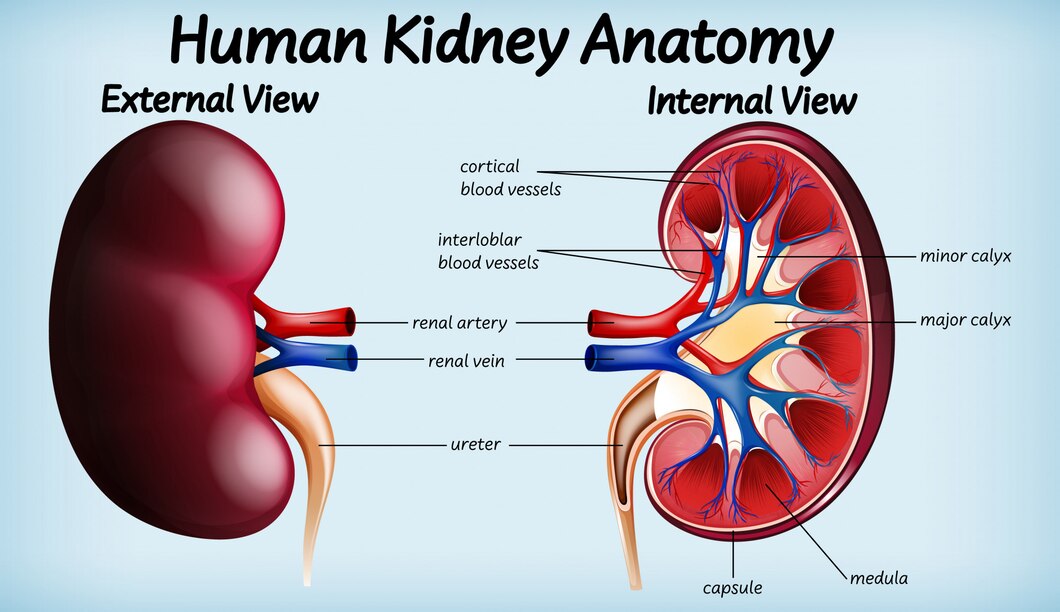Save 25% On Your First Autoship Order
Save 25% On Your First Autoship Order
As we age, we encounter a plethora of health issues that cause pain and discomfort. One of the more painful ones you can experience is kidney stones. Innocuous items such as minerals and other compounds in our urine can form these small deposits that need to be extruded from our bodies. Anyone who has experienced a kidney stone knows first-hand how painful it can be. HPFY has all the important information you need about what they are and how they form.
Kidney stones are also known as renal or urinary stones but make no mistake they can completely ruin your day. They are small, hard deposits that can form in one or both of your kidneys. They need to be expelled from your body by traveling through ducts from your kidney to your bladder, through your urethra, and out of your body. These crystallized particles can be sharp and irritating while passing. This process takes anywhere from days to weeks to play out and can cause abdominal or back pain.

The four main types of stones include -
Basically, kidney or renal stones form when there are more of these compounds that can be dissolved in the urine. According to the NIH, this imbalance can be caused by an increased amount of material in urine, a reduction of liquid urine, or a combination of both. This concentration of minerals is the foundation for kidney stones to form.
Diet, being overweight, and even some supplements/medications can cause kidney stones to form. So how do you know if you have developed kidney stones? Kidney stones affect the urinary tract and normally won’t give any symptoms unless they are on the move (either in your kidneys or your ureters.) Passing a stone can be quite painful but normally cause no permanent damage. A stone can get lodged in your ureter if the stone measures approximately 5 mm or larger.

The Mayo Clinic identifies symptoms of a kidney stone as-
These symptoms can be accompanied by fever or chills if an infection is present. Also, if a stone lodges in your ureter and blocks urine this can result in swelling of the kidney and cause your ureter to spasm. This can also be extremely painful.
Often if you are suffering from these symptoms and your doctor suspects kidney stones are the culprit you may be told to take pain medication and drink plenty of water to pass these urinary stones. You may require surgery if these stones become lodged in the urinary tract or cause infection.
Disclaimer: All content found on our website, including images, videos, infographics, and text were created solely for informational purposes. Our content should never be used for the purpose of diagnosis or treatment of any medical conditions. Content shared on our websites is not meant to be used as a substitute for advice from a certified medical professional. Reliance on the information provided on our website as a basis for patient treatment is solely at your own risk. We urge all our customers to always consult a physician or a certified medical professional before trying or using a new medical product.

Kevin Cleary has been a Health Products For You contributor for many years and has a degree in marketing. His health and wellness journey has a very personal meaning and has guided him in his content writing for HPFY.
In 2006, ...
How To Increase Iron Levels Quickly
It’s a question that must have puzzled you like many others. Iron is essential in hemoglobin production and its inadequate levels can negatively impact your health. Dive into this informative article to explore top iron-rich foods that can help you fight iron deficiency.
10 Best Coccyx Cushions for Tailbone Pain
If you're like most people, you spend about 8 to 10 hours sitting every day. However unhealthy, it is part of life for many, and can cause tailbone pain. Coccyx cushions can help alleviate this pain. Click to read more and find the perfect coccyx cushion for your tailbone pain.
5+ Best Adult Diapers for Fecal Incontinence
Dealing with fecal incontinence can be challenging, but you're not alone. Read this article and navigate through discreet and effective solutions that help you manage fecal incontinence and let you live life on your terms with confidence and comfort.
Top 5 Best Reviewed Nebulizers of 2024
Need an effective and affordable nebulizer? Look no further, in this article we offer 5 of our best reviewed nebulizers that are loved by our customers. Click to read more and find the perfect nebulizer for all your respiratory needs.
10 Best Penis Pumps For Erectile Dysfunction
For anyone dealing with erectile dysfunction, penis pumps serve as a great way to manage it. But with so many products available, determining the best one for your needs can be challenging. To assist you in refining your choices and making an informed decision, here are our top 10 options, recognized for their effectiveness and safety.